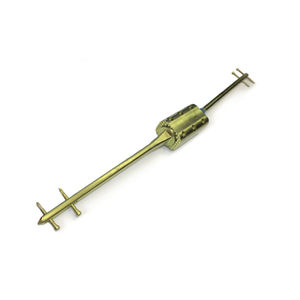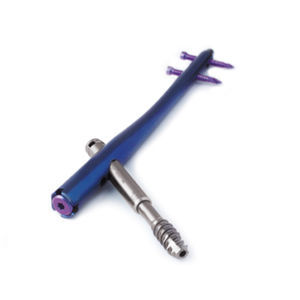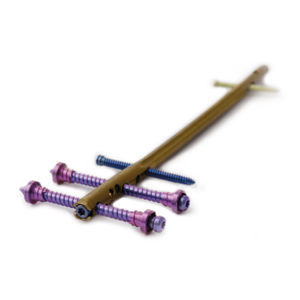

- Company
- Products
- Catalogs
- News & Trends
- Exhibitions
Tibial intramedullary nail CHARFIX ankletarsal jointdistal fixation
Add to favorites
Compare this product
fo_shop_gate_exact_title
Characteristics
- Joint / bone
- tibia, ankle, tarsal joint
- Fixation
- distal fixation
- Side
- right, left
- Materials
- titanium
- Length
Max.: 320 mm
(12.6 in)Min.: 160 mm
(6.3 in)- Distal diameter
Max.: 14 mm
(0.6 in)Min.: 8 mm
(0.3 in)
Description
Tibial retrograde intramedullary nails manufactured by ChM company are designed for stable osteosynthesis of the tarsus and the distal tibia, for the treatment of degenerations and deformities of the tarsal joints.
Indications for retrograde nailing:
• tibiocalcaneal arthrodesis;
• combined arthrodesis of talocrural joint and talocalcaneal joint;
• avascular necrosis of talocalcaneal joint and talocrural joint;
• rheumatoid arthritis;
• severe, secondary deformity of untreated congénital club foot (talipes equinovarus) or in the case of the neuromuscular disease;
• seriously deformed foot / tarsal joint, arthritic deformity of tarsal joint with associated stiffness in the talocalcaneal joint;
• osteoarthritis;
• instability and skeletal defects after tumor resection;
• distal tibial fracture non-unions;
• tibial plafond fracture and / or talus where reconstruction is not possible;
• severe multifragmentary fractures with associated damage to the talocalcaneal joint;
• fractures, dislocations of the tarsal joint combined with serious arthritic changes and loss of function;
• above-ankle non-union combined with stiffness in the talocalcaneal joint;
• mal-union of tarsal joint;
• after a failed total tarsal joint replacement with talocalcaneal joint intrusion.
The nail has 6 holes for locking screws in its proximal and distal part. Locking is performed using the targeters included in the instrument set and additional targeters.
Catalogs
Intramedullary nails
121 Pages
Exhibitions
Meet this supplier at the following exhibition(s):

Related Searches
- Bone plate
- Compression plate
- Metallic compression plate
- Locking compression plate
- Titanium compression plate
- Distal compression plate
- Compression bone screw
- Metallic compression bone screw
- Interbody fusion cage
- Orthopedic surgery surgery set
- Proximal compression plate
- Forearm compression plate
- Mid-shaft compression plate
- Arthrodesis nail
- Lateral compression plate
- Tibia compression plate
- Radius compression plate
- PEEK interbody fusion cage
- Humeral compression plate
- Metallic intramedullary nail
*Prices are pre-tax. They exclude delivery charges and customs duties and do not include additional charges for installation or activation options. Prices are indicative only and may vary by country, with changes to the cost of raw materials and exchange rates.

















